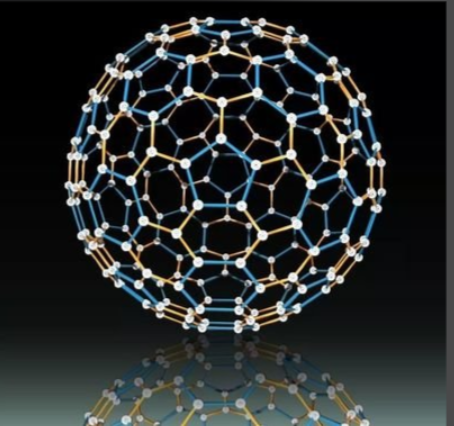Graphene in Perovskite Solar Cell Efficiency Boost: Unlocking Next-Generation Photovoltaics
Solar energy is one of the most promising renewable energy sources for achieving global sustainability goals. Over the past decade, perovskite solar cells (PSCs) have emerged as a revolutionary photovoltaic technology due to their low-cost production, tunable bandgaps, and rapidly improving efficiencies. In just a few years, PSCs have reached power conversion efficiencies (PCE) exceeding 25%, rivaling traditional silicon-based solar cells.

Yet, despite their impressive performance, perovskite solar cells face significant challenges: stability, scalability, and long-term durability. This is where graphene, often called the “wonder material,” comes into play. With its exceptional conductivity, flexibility, and chemical stability, graphene is proving to be a game-changer in boosting both the efficiency and lifetime of perovskite solar cells.
This article explores the role of graphene in enhancing perovskite solar cell efficiency, its working mechanisms, applications, and the future outlook for commercial adoption.
Perovskite Solar Cells: A Brief Overview
Perovskite solar cells are based on materials with the ABX₃ crystal structure (e.g., methylammonium lead iodide). Their key advantages include:
-
High light absorption across the solar spectrum.
-
Low fabrication cost via solution processing or printing techniques.
-
Thin and lightweight design suitable for flexible and portable applications.
-
Tunability by adjusting chemical composition, allowing multi-junction architectures.
However, PSCs face obstacles:
-
Moisture and oxygen sensitivity, leading to rapid degradation.
-
Ion migration, causing performance loss.
-
Thermal instability under continuous illumination.
To address these challenges, researchers have turned to nanomaterials like graphene as performance enhancers.
Why Graphene?
Graphene is a single layer of carbon atoms arranged in a honeycomb lattice. Its extraordinary properties make it a powerful additive for PSCs:
-
High Electrical Conductivity → facilitates faster charge transport.
-
Excellent Transparency → allows maximum light penetration.
-
Mechanical Strength → improves device stability and flexibility.
-
Chemical Inertness → protects perovskite layers from degradation.
-
Scalable Processing → compatible with solution-based fabrication.
By integrating graphene at different layers of the PSC structure, researchers have achieved significant improvements in efficiency, stability, and lifespan.
How Graphene Boosts PSC Efficiency
1. Enhanced Charge Transport
Graphene serves as an excellent electron and hole transport material. When incorporated into electron transport layers (ETLs) or hole transport layers (HTLs), graphene reduces recombination losses and accelerates charge extraction, boosting overall PCE.
2. Reduced Defects in Perovskite Layers
Graphene additives passivate defects in the perovskite crystal structure, minimizing trap states that cause efficiency loss. This leads to higher open-circuit voltage and fill factor.
3. Improved Stability
Graphene acts as a barrier layer against moisture and oxygen, protecting sensitive perovskite materials. This significantly extends device operational lifetime.
4. Thermal Management
Thanks to graphene’s high thermal conductivity, it dissipates excess heat within the device, preventing thermal degradation and maintaining efficiency under continuous operation.
5. Flexible and Scalable Designs
Graphene’s mechanical strength enables flexible PSCs, opening doors for lightweight, bendable solar panels ideal for wearables and portable electronics.
Applications of Graphene-Enhanced Perovskite Solar Cells
1. High-Efficiency Solar Modules
Integrating graphene can push PSC efficiencies closer to theoretical limits, making them competitive with silicon photovoltaics.
2. Flexible and Wearable Devices
Graphene-enabled PSCs are ideal for smart textiles, foldable electronics, and portable chargers.
3. Tandem Solar Cells
Graphene improves interlayer conductivity in perovskite-silicon tandem architectures, a pathway toward >30% efficiency solar modules.
4. Building-Integrated Photovoltaics (BIPV)
Graphene-perovskite films can be made semi-transparent, enabling integration into windows, facades, and green buildings.
Graphene vs. Other Additives
Researchers are exploring various nanomaterials to enhance PSCs, but graphene offers unique advantages:
-
Carbon Nanotubes (CNTs): Good conductivity but less transparent than graphene.
-
Metal Nanoparticles: Enhance plasmonic effects but can introduce instability.
-
Conductive Polymers: Flexible but less durable in harsh environments.
Compared to these, graphene offers the best combination of transparency, conductivity, stability, and scalability.
Market Outlook
The perovskite solar cell market is projected to exceed USD 5 billion by 2032, driven by demand for high-efficiency and low-cost photovoltaics. Graphene integration is expected to accelerate commercialization by solving key stability and efficiency bottlenecks.
Drivers for growth include:
-
Rising demand for lightweight and flexible solar panels.
-
Investments in next-generation photovoltaics.
-
Strong R&D collaborations between graphene startups, PV manufacturers, and research institutes.
Challenges and Considerations
While graphene-enhanced PSCs show strong promise, challenges remain:
-
Cost of High-Quality Graphene → though prices are falling, large-scale production remains a hurdle.
-
Integration Techniques → achieving uniform, defect-free graphene layers is complex.
-
Long-Term Stability Testing → PSCs must pass industry-standard durability benchmarks before commercialization.
-
Scalability → transferring lab-scale results to mass production requires roll-to-roll and printing process optimization.
Future Outlook
The future of graphene in perovskite solar cells looks bright. Key trends to watch:
-
Hybrid Additives → combining graphene with CNTs or quantum dots for synergistic performance.
-
Printable Graphene Inks → enabling low-cost, scalable solar panel manufacturing.
-
Commercial Tandem Cells → graphene helping perovskite-silicon tandems exceed 30% PCE.
-
Durability Standards → graphene integration could help PSCs pass rigorous outdoor stability tests, unlocking mass adoption.
Graphene is more than just a buzzword—it is a critical enabler for next-generation perovskite solar cells. By enhancing charge transport, stabilizing perovskite layers, and improving thermal management, graphene significantly boosts both efficiency and durability.
As research continues and production costs fall, graphene-enhanced PSCs will play a key role in the global transition to clean energy. From flexible solar fabrics to high-efficiency rooftop panels, the synergy between graphene and perovskites is set to transform the photovoltaic industry.
For companies, investors, and researchers, now is the time to embrace graphene in perovskite technology—unlocking the next wave of sustainable, affordable, and high-performance solar energy solutions.

